Related Research Articles
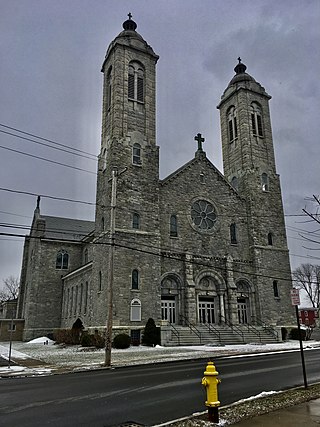
East Syracuse is an incorporated village and a suburb of the City of Syracuse in eastern Onondaga County, New York, United States. As of the 2020 census, the population was 3,078. It is located immediately east of Syracuse, in the town of DeWitt.
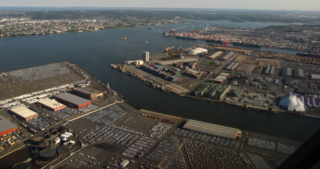
Port Newark–Elizabeth Marine Terminal, a major component of the Port of New York and New Jersey, is the principal container ship facility for goods entering and leaving the New York metropolitan area and the northeastern quadrant of North America. Located on Newark Bay, the facility is run by the Port Authority of New York and New Jersey. Its two components, Port Newark and the Elizabeth Marine Terminal sit side by side within the cities of Newark and Elizabeth, New Jersey, just east of the New Jersey Turnpike and Newark Liberty International Airport.

The New York, Susquehanna and Western Railway, also sometimes referred to as New York, Susquehanna and Western Railroad, Susie-Q or the Susquehanna, is a Class II American freight railway operating over 400 miles (645 km) of track in three Northeastern states, New Jersey, New York, and Pennsylvania.
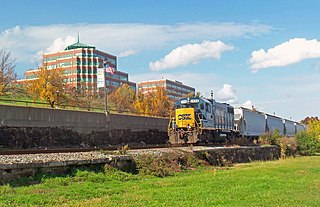
The River Subdivision is a railroad line owned by CSX Transportation in the U.S. states of New Jersey and New York. The line runs from the North Bergen Yard in Hudson County, New Jersey north to Ravena, New York, along the alignment of the West Shore Railroad, a former New York Central Railroad line.

New York New Jersey Rail, LLC is a switching and terminal railroad that operates the only car float operation across Upper New York Bay between Jersey City, New Jersey and Brooklyn, New York. Since mid-November 2008, it has been owned by the Port Authority of New York and New Jersey, which acquired it for about $16 million as a step in a process that might see a Cross-Harbor Rail Tunnel completed.

The Oak Point Link, also known as the South Bronx–Oak Point Link, is a 1.9-mile (3.1 km) long railroad line in the Bronx, New York City, United States, along the east bank of the Harlem River. It connects the Metro-North Railroad's Hudson Line with the Harlem River Intermodal Yard and the CSX Transportation Oak Point Yard at the north end of the Hell Gate Bridge.
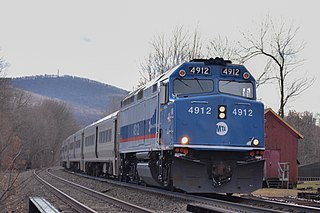
The Port Jervis Line is a predominantly single-track commuter rail line running between Suffern and Port Jervis, in the U.S. state of New York. At Suffern, the line continues south into New Jersey on NJ Transit's Main Line. The line is operated by NJ Transit Rail Operations under a contract with Metro-North Railroad (MNRR).

The Port of New York and New Jersey is the port district of the New York-Newark metropolitan area, encompassing the region within approximately a 25-mile (40 km) radius of the Statue of Liberty National Monument.
The Cross-Harbor Rail Tunnel is a proposed freight rail transport tunnel under Upper New York Bay in the Port of New York and New Jersey between northeastern New Jersey and Long Island, including southern and eastern New York City.
The Mohawk Subdivision is a railroad line owned by CSX Transportation in the U.S. state of New York. The line runs from Amsterdam, NY west to Oneida, NY along the former New York Central Railroad main line. At its east end, east of downtown Amsterdam, the line becomes the Selkirk Subdivision. With the creation of the CSX Syracuse Terminal Subdivision, the west end is at Oneida, New York.

The Selkirk Hurdle is the term used by urban planners, railroad employees, politicians, and others to describe the route that must be taken by freight trains traveling between New York City and other points in downstate New York that are east of the Hudson River, and locations in the United States to the south and west. There are no rail freight bridges or tunnels that cross the Hudson River south of Selkirk, which is 10 miles (16 km) south of Albany and the home of Selkirk Yard, a major CSX classification yard. As a result, trains from Long Island and New York City must travel 140 miles (230 km) north to cross at Selkirk before continuing on their way. Advocates claim that this detour and the inefficiencies that result force New York City to rely more heavily on relatively-inefficient trucks than most parts of the United States, where freight trains are more common. However, at least for traffic to and from the west, this route was touted for its efficiency as the "Water Level Route" by the New York Central Railroad because trains using it did not have to climb over the Appalachian Mountains, and it is still used by the New York Central's successor, CSX, for traffic to both sides of the Hudson River.
The Virginia Port Authority (VPA) is an autonomous agency of the Commonwealth of Virginia that owns The Port of Virginia, a group of facilities with their activity centered on the harbor of Hampton Roads, Virginia.

Port Jersey, officially the Port Jersey Port Authority Marine Terminal and referred to as the Port Jersey Marine Terminal, is an intermodal freight transport facility that includes a container terminal located on the Upper New York Bay in the Port of New York and New Jersey. The municipal border of the Hudson County cities of Jersey City and Bayonne runs along the long pier extending into the bay.
Greenville Yard is a freight rail yard in the Port of New York and New Jersey. It is located on Upper New York Bay in Jersey City, New Jersey, adjacent and north of Port Jersey. Originally developed in 1904 by the Pennsylvania Railroad, it was later taken over by Conrail. It has been owned by the Port Authority of New York and New Jersey since 2010. It takes its name from the former municipality of Greenville, now part of the city.

Selkirk Yard is a large freight railroad yard located in Selkirk, New York, about 8 mi (13 km) south of Albany. The yard is owned by CSX Transportation and is its major classification yard for the northeastern United States and the gateway to points east of the Hudson River, including New York City. It is situated just west of the Alfred H. Smith Memorial Bridge on the railroad's Castleton Subdivision, and is the eastern end of the Selkirk Subdivision.

From the start of railroading in America through the first half of the 20th century, New York City and Long Island were major areas for rail freight transportation. However, their relative isolation from the mainland United States has always posed problems for rail traffic. Numerous factors over the late 20th century have caused further declines in freight rail traffic. Efforts to reverse this trend are ongoing, but have been met with limited success.
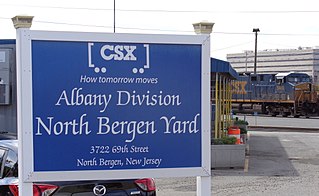
The North Bergen Yard is freight rail yard and intermodal terminal in North Bergen, New Jersey parallel to Tonnelle Avenue between 49th and 69th Streets. Located within the North Jersey Shared Assets Area, the facility is part of CSX Transportation (CSXT) and the origination point of its CSX River Subdivision at the southern end of the Albany Division. On its west side, the New York, Susquehanna and Western Railway (NYSW) runs the length of the yard and operates a bulk transloading operation immediately adjacent to it.

Little Ferry Yard is a railyard and intermodal terminal in the Port of New York and New Jersey served by the CSX River Subdivision (CSXT), New York, Susquehanna and Western Railway (NYSW), Norfolk Southern Railway and Conrail Shared Assets Operations (CRCX).

ExpressRail is a network of on- or near-dock rail yards supporting intermodal freight transport at the major container terminals of the Port of New York and New Jersey. The development of dockside trackage and rail yards for transloading has been overseen by the Port Authority of New York and New Jersey, which works in partnership with other public and private stakeholders. As of 2019, four ExpressRail facilities were in operation, with a total built capacity of 1.5 million lifts.
References
- ↑ Central New York Rail Corridor Inventory 2003
- ↑ "History 1881-2008 | East Syracuse NY". www.villageofeastsyracuse.com.
- ↑ "Inland Port Study: CSX rail yard in DeWitt is only viable site". WSTM. December 6, 2017.
- ↑ "Rail News - PANYNJ sees growth potential in CSX's expanded DeWitt Rail Yard. For Railroad Career Professionals". Progressive Railroading.
- ↑ "New York State-funded Enhanced DeWitt Rail Yard project set to be finished by July; WSYR". www.localsyr.com.
- ↑ "NY approves $19M deal to make DeWitt rail yard an 'inland port'". syracuse. July 11, 2018.
- ↑ "New York backs upstate inland port | JOC.com". www.joc.com.